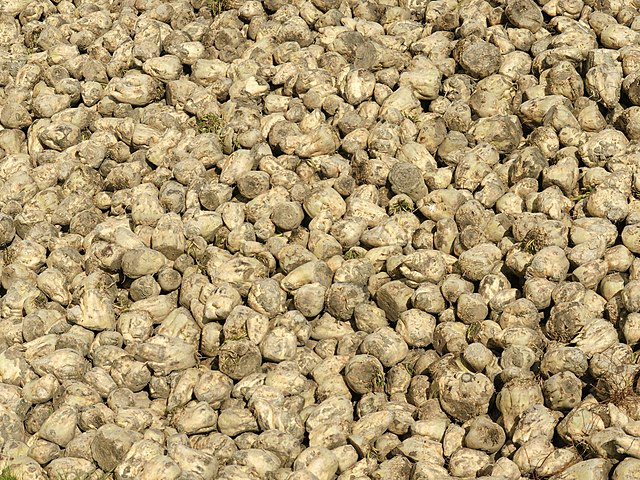Germany expects production of refined sugars to simmer down by 4.9% in the 2025-26 financial year, shrugging off a 2024 glut.
According to Agriinsite on September 8, 2025, Germany’s sugar industry association (WVZ) forecasts an annual decrease by 0.23 million tonnes.
On September 7, the WVZ put an initial output projection at 4.4 million tonnes, which could change in later forecasts.
The body blames the decrement to low sugar beet acreage by 9.3% year-on-year (y-o-y), to 350,100 hectares in 2025.
The view echoes similar trends in Europe, whose beets industry lost glitter in early 2025 due to a price slump. This in turn caused the bloc’s farmers to shelve plantings.
The WVZ expects the 2025-26 beet yield rate to fall to 82.6 tonnes a hectare (ha) from 2024-25’s 84.7 tonnes/ha.
Productivity declines will not hamper the sucrose content of the crop, however, which will increase by 0.9%, to 17.2%, y-o-y.
This is good news at a time when farmers are approaching the winter planting season with trepidation over sugariness-impacting diseases. One of these is the low sugar content syndrome or SBR, which leads to significant losses.
Glut in 2024
Conversely at a time like this in 2024, Germany’s sugar industry had foreseen a 13% yearly rise in sugar production.
Initial estimates had put refined beet sugar production at 4.77 million tonnes, up from the 4.22 million tonnes of 2023-24, per Reuters.
That forecast went down the wire, culminating in an actual production of 4.63 million tonnes for the 2024-25 season.
The forecast also put acreage that year at 385,000 ha or 5.7% more than that of the foregoing season.
Now the question remains whether this latest projection will finally auger with actual output in 2026. Meantime, here are a few notes on the production and utilization of sugars in Germany.
Germany Sugars Statistics
Germany’s sugar industry is a behemoth in Europe that depends exclusively on beets for raw materials. The country boasts between 360,000 hectares (2014) and 385,000 ha (2024 estimate) of cultivated beets each year. This represents around 3% of the country’s farmland, on which 31,000 growers cultivate the crop. Although beets have historically also served as the source of biofuels and biogas, their main purpose is sugar conversion. Around 20 sugar mills were operating in the country in 2014.
Below is a production snapshot of beets in the 2010-23 period, courtesy of the FAOSTAT:
| Year | Production [tonnes] | Cultivated Area [Ha] |
| 2023 | 31,558,200 | 395,800 |
| 2022 | 28,201,400 | 396,300 |
| 2021 | 31,945,400 | 390,700 |
| 2020 | 28,618,100 | 386,000 |
Does Germany export much sugar?
Germany has historically been a major exporter of raw sugars and processed confectionary. In 2024, the export value reached $4.9 billion the fifth highest worldwide, according to the Trading Economics. Germany, Brazil, India, Thailand and France together supplied 68.7% of the global raw sugar export value in 2024. Indeed, raw sugar exports by Germany in the 2024-25 season amounted to over $1.197 billion or a 3.2% share globally.
Is Germany’s export sugar expensive?
In terms of unit value sales, sugar from Germany is pretty expensive in the international market. In 2024, for example, it shipped at $792 a tonne, behind Mexico’s $929/tonne, among the top 12 exporters. This high rate helped Germany attain a trade surplus of $706.5 million in sugar versus imports.
